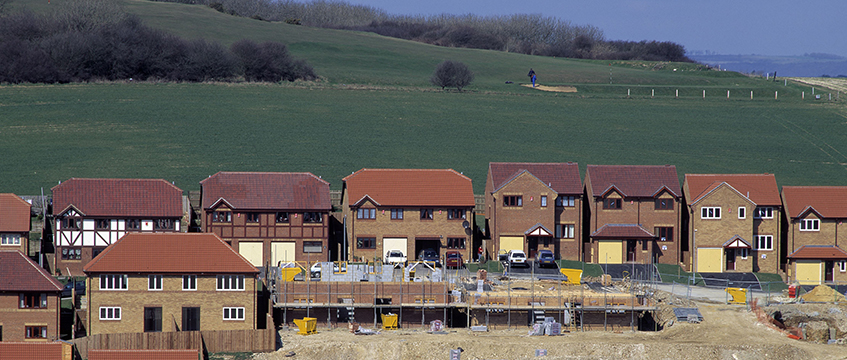Solving the housing crisis has been high on the political agenda for a number of years, and yet progress still seems glacially slow.
There are a number of possible reasons for this, but a sharp increase in local opposition to development schemes is playing its part. While large-scale development has always been controversial, the extent of local opposition is on the increase – or is more keenly felt by politicians. A recent poll of planning committee members by Newgate Research found 41% cited community opposition as one of the biggest challenges to housing delivery, up from 18% in 2018.
Not only are local residents getting better at placing pressure on their elected officials, they are now entering the political arena themselves. You might argue that when the Boston Bypass Independents took control of Boston Borough Council in 2007, they were in the wrong tier of local governance to achieve their aim. That is now no longer the case; the local government elections in May saw an increasing number of local political parties gaining seats on their councils, and in some cases taking control of them.
In Kent, the Tunbridge Wells Alliance (a political party set up to stop a large development project in the town) took six seats on the borough council, making them the third largest voting bloc after the Conservatives and the Liberal Democrats. In Essex, Residents for Uttlesford (R4U) – a party formed out of a number of residents groups in 2011 – actually took control of the council, with a comfortable majority of 13 seats.
What is the practical effect?
What does this growth in local populism and anti-development sentiment mean for planning, and the national housing crisis? Can we achieve the government’s aspiration of building 300,000 homes a year, with more councils taking localism to its logical conclusion?
The early signs in Uttlesford are not promising. Uttlesford’s draft local plan was submitted for examination in January – four months before the local election. R4U opposed the local plan and wrote to the Planning Inspectorate (PINS), following its submission, to object to it and request to speak at the examination. On 11 June, PINS wrote to the council asking whether concerns raised by R4U now represented the position of the council, given that R4U now has overall control – and, if so, whether the council would be withdrawing the plan as a result.
If R4U withdraws the local plan, in order to fix the “flaws” that members had campaigned against, it will leave the borough without an up to date local plan. This would jeopardise both its five-year housing land supply and its housing delivery rate, leaving the borough vulnerable at appeal.
Alternatively, if it lets the local plan proceed, it will reduce the financial cost to the council of having to redo the whole plan process and protect the borough from planning by appeal; but at the political cost of having to publicly state that the local plan is sound, directly contradicting both R4U’s manifesto and the promises made on the campaign trail.
Uttlesford is not alone. There are a number of councils facing significant delays or challenges because of a change of political control at the council.
In Amber Valley, the newly elected Labour council promptly withdrew the submitted local plan. The decision was made following an election campaign that built on extensive local opposition to the release of green belt sites for residential development. On 17 June, the planning committee also resolved to review seven controversial planning applications which the previous administration had resolved to grant but had yet to issue.
In Guildford, a new party – Residents for Guildford and Villages (R4GV) – won 15 seats in the May elections, contributing to the Conservatives losing control of the council. R4GV expressly campaigned to review the council’s recently adopted local plan, to try and reduce housing numbers and the loss of green belt land.
In Tandridge, the Oxted and Limpsfield Residents Group (OLRG) achieved three seats on the council, and is leading an alliance of independent councillors in opposition to their local plan, which has been submitted for examination. In particular, OLRG are opposed to the creation of a significant new settlement at South Godstone.
The common thread that runs through all of these issues is protectionism. For local populist parties, the desire to protect their local area from undesirable development – usually large-scale residential schemes or anything on the green belt – trumps wider national considerations. While almost all acknowledge the need for more housing in their local areas, the focus on genuinely affordable housing on brownfield sites means that the level of development actually supported in local party manifestos is often far less than the borough’s objectively assessed housing need.
Protectionist agenda
Without the framework of a national party system and a national manifesto, there is even less incentive for local issue parties to look beyond their immediate surroundings. There is no national party to be embarrassed by a refusal to toe the line on development priorities – such as building more homes. The duty to co-operate and other policy incentives to encourage councils to take a more regional view are somewhat ineffective without a central policy tying them together.
At present, the effect of local residents seizing control of the political agenda seems to be a push towards reducing levels of development, rather than increasing them.
While this may come as a surprise to those who still champion neighborhood plans, the push back against large scale development could well become a problem if steps are not taken to counteract it. Given that local residents are, understandably, focused on local impacts, perhaps it might be time to re-introduce a level of decision-making that is expressly designed to take a wider view.
In the new era of localism, regional planning does not look so bad after all.
Nicola Gooch is a partner in the planning team at Irwin Mitchell








